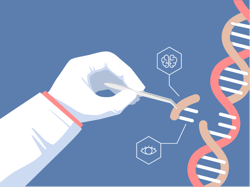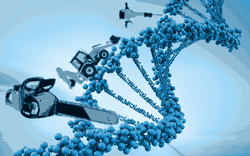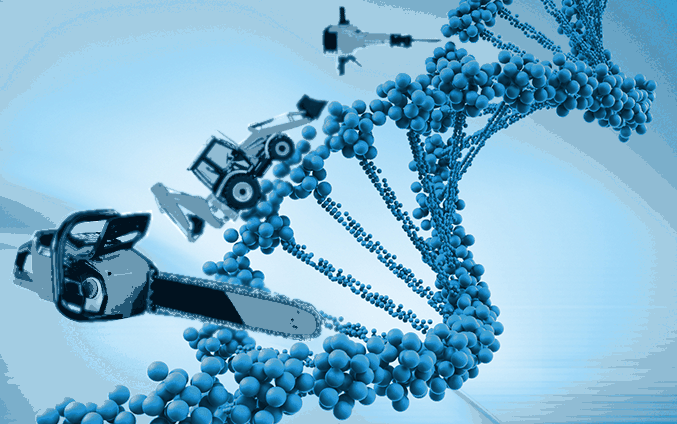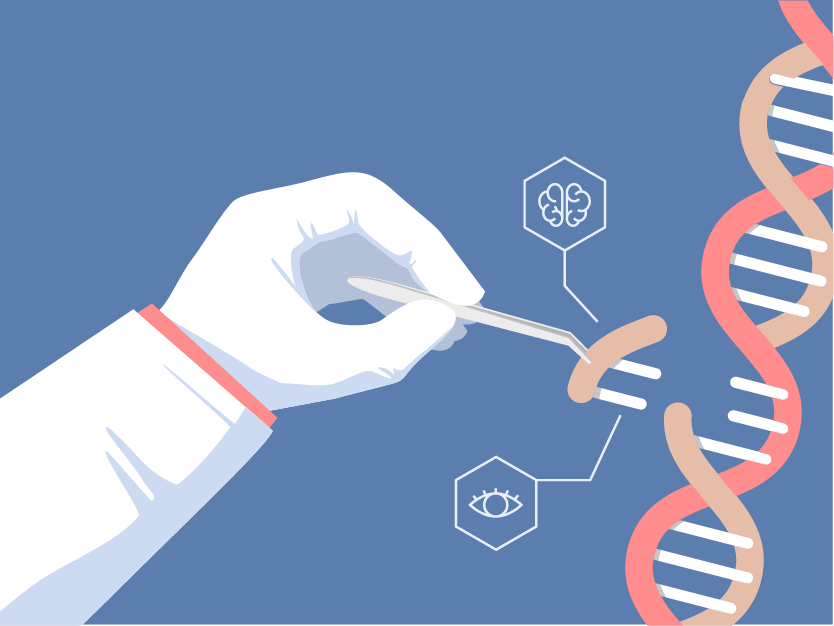 I was recording a new BioChat (you should subscribe) recently with a professor at Harvard. We discussed gene therapy in passing for the disease he was studying, and one of the things that he brought up was the need to ensure that whatever therapy is designed has to be safe and effective. This of course is the promise and also the challenge of CRISPR-based research, in which the model is known but the targeting efficiency isn't where it needs to be in order to be of practical use in therapeutics. This is a big reason why the biomedical research world was abuzz with the recent announcement (and preprint) of a major discovery by scientists at the Broad Institute, where they characterized the mechanisms and the potential utility of a system similar to CRISPR in eukaryotes.
I was recording a new BioChat (you should subscribe) recently with a professor at Harvard. We discussed gene therapy in passing for the disease he was studying, and one of the things that he brought up was the need to ensure that whatever therapy is designed has to be safe and effective. This of course is the promise and also the challenge of CRISPR-based research, in which the model is known but the targeting efficiency isn't where it needs to be in order to be of practical use in therapeutics. This is a big reason why the biomedical research world was abuzz with the recent announcement (and preprint) of a major discovery by scientists at the Broad Institute, where they characterized the mechanisms and the potential utility of a system similar to CRISPR in eukaryotes.
Slow But Steady Forward Movement
 The research in question was spearheaded by Dr. Feng Zhang, a Howard Hughes investigator at the Broad Institute comprising both MIT and Harvard (though he is stationed on the MIT side). Broad has their own awesome summary of their research, and Dr. Zhang has given some interviews for GEN and likely other outlets, but as I read through the paper itself, it was apparent how many threads had to be woven together to tell this story. Noting how brilliant all of this interlaced thinking is, it really is no wonder why he gets all the funding and prestige, but I digress.
The research in question was spearheaded by Dr. Feng Zhang, a Howard Hughes investigator at the Broad Institute comprising both MIT and Harvard (though he is stationed on the MIT side). Broad has their own awesome summary of their research, and Dr. Zhang has given some interviews for GEN and likely other outlets, but as I read through the paper itself, it was apparent how many threads had to be woven together to tell this story. Noting how brilliant all of this interlaced thinking is, it really is no wonder why he gets all the funding and prestige, but I digress.
The intriguing thing about this study is that the protein in question, known as Fanzor, originally wasn't even thought to have activity consistent with gene editing per se. Fanzor was initially characterized in 2013, not long after the report of CRISPR. The authors explained that at some point, TnpB, which was the ancestral protein for CRISPR-Cas12, was reported to be part of an RNA-guided system. Somewhere within every author's brain and through probably innumerable rounds of Slack chats and group meetings, they made a logical leap that this protein could be the eukaryotic equivalent of CRISPR, and they squeezed a comprehensive set of evolutionary, biochemical, structural, and practical data into what will soon be a Nature paper of five pages or so once the journal finishes final editing. It is impressive and inspiring that they were able to connect the dots and incorporate multiple disciplines in bioscience to tell this story in just a decade after the first reports of Fanzor mechanisms that may not have overtly hinted at CRISPR.
A Beautiful Design
 This study did some phylogeny to determine that Fanzor shared some homology with TnpB, and showed that homologs of this protein could be found in fungi, viruses, arthropods, plants, and even in certain mollusks like the Northern Quahog, a clam that has nothing to do with Family Guy. They then did structural studies to show the presence of a catalytic region, a RuvC domain, which is similar to other proteins that have RNA-guided mechanisms when modifying DNA. Subsequently, they showed that Fanzor can cut DNA with an Omega-RNA sequence that guides the protein to its target, and also screened some Fanzor orthologs to see which ones might be the most effective at human genome editing.
This study did some phylogeny to determine that Fanzor shared some homology with TnpB, and showed that homologs of this protein could be found in fungi, viruses, arthropods, plants, and even in certain mollusks like the Northern Quahog, a clam that has nothing to do with Family Guy. They then did structural studies to show the presence of a catalytic region, a RuvC domain, which is similar to other proteins that have RNA-guided mechanisms when modifying DNA. Subsequently, they showed that Fanzor can cut DNA with an Omega-RNA sequence that guides the protein to its target, and also screened some Fanzor orthologs to see which ones might be the most effective at human genome editing.
After choosing to focus on SpuFz1, which is the Fanzor protein from a soil fungus, the authors were able to show the necessary minerals (including magnesium, calcium, and manganese), the protein's broad functional temperature range, and the activity of this protein on different forms of nucleic acids and the parameters for the guide RNA. They also optimized the binding strength of the SpuFz1 to its guide RNA and target DNA through screening a plethora of designed mutants, and used a combination mutant to demonstrate improved gene editing efficiency.
Potential Lessons
The amount of work done to build this thorough study is mind-boggling! Think of all the mutants they had to generate through molecular biology and the characterizations they had to do, the likely hours and days spent staring through phylogeny data to build simulations and trees to connect the evolutionary history of these proteins, not to mention the biochemistry and genetic analysis to actually show that these proteins exist in a variety of different organisms across all the kingdoms of life. The marriage of many different disciplines of biology has succeeded in building a wonderful story that can be the jumping point for many new studies. I'm not sure if they can award a Nobel Prize for a eukaryotic version of a previous Nobel Prize discovery, but there is a reason such a study got so much attention.
This leads me to a few lessons that we might take from this biological adventure. The first is that nature is beautifully designed and just as with proteins and other biomolecules that may have multiple unforeseen functions, thinking outside the box has elucidated a new mechanism for a protein which may one day produce a better, safer, and more practical gene editing tool to aid experimentation and therapeutic development. We should always celebrate innovation and support it, as it can promote a better quality of life for all of us.
Another lesson that might not necessarily be apparent but should also be followed is something I talked about in the previous blog on CRISPR. This study was remarkably complete in all conceivable aspects to initially query the functional parameters of Fanzor. But as with CRISPR, further scrutiny and further experimentation needs to be performed to fully understand the capabilities and to safely deliver the protein and edit the genome without any off-target effects. Science should be for the greater good, and that involves both safety and ensuring equal access to potentially life-saving technology.
Speaking of access, considering the broad scope of this study and everything they were able to do, it had to have cost a boatload of money. Of course, being part of a world-class institution in MIT and having HHMI funding (in addition to all the other funding sources Dr. Zhang likely has as an elite researcher) certain helps, but as many of you know, not everyone has access to that level of resources. Wouldn't it be nice to not only increase research funding to help drive these great ideas to fruition, but make sure that increased funding can also funnel to folks whose ideas could be just as good, but just don't have as much exposure? I would be excited to see what the brilliant scientific community has in store for us in the future, and hopefully we get more from Broad and labs like Dr. Zhang's, but also from many other institutions around the country and the world that will also contribute to our growing knowledge base.




